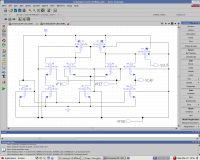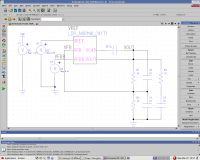OmarMdDawi
Newbie level 3
Hi,
Can someone help me on LDO Regulator. FYI, i'm designing LDO Regulator with Forward Body Bias (FBB) technique using mentor graphic software (Silterra 0.13um). I had a problem where the power dissipation of this FBB LDO Regulator increased only 0.1mW compared to conventional circuit. Can someone explain this. Tq
Can someone help me on LDO Regulator. FYI, i'm designing LDO Regulator with Forward Body Bias (FBB) technique using mentor graphic software (Silterra 0.13um). I had a problem where the power dissipation of this FBB LDO Regulator increased only 0.1mW compared to conventional circuit. Can someone explain this. Tq

